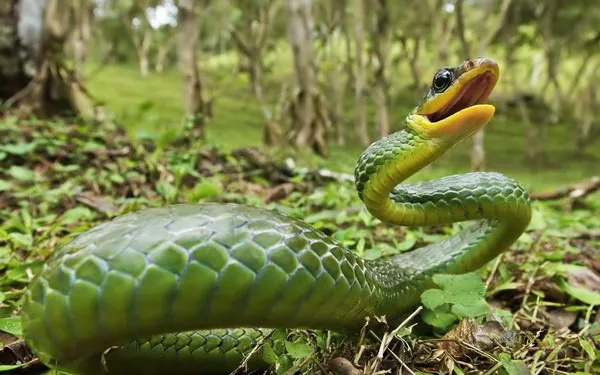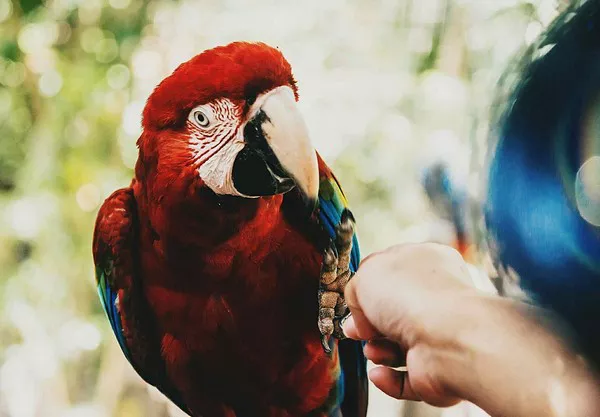Corn snakes (Pantherophis guttatus) are one of the most popular pet snakes, prized for their calm temperament, attractive appearance, and ease of care. Among the many questions that new and prospective corn snake owners may have, one of the most common inquiries is whether corn snakes lay eggs. This question is rooted in understanding the reproductive habits of these non-venomous reptiles and how they differ from mammals, particularly those that may be more familiar to pet owners, like dogs, cats, and even hamsters.
This article will explore the reproductive biology of corn snakes, focusing on their egg-laying behavior, the process of laying eggs, and how pet owners can support their snakes through the reproductive cycle. Whether you are a first-time snake owner or someone who already cares for corn snakes, understanding their reproductive process is important for ensuring their health and well-being.
1. Reproductive Basics of Corn Snakes
To answer the question, “Do corn snakes lay eggs?” we first need to understand some basic biology. Corn snakes, like most reptiles, reproduce sexually, meaning that they require both a male and a female to reproduce. Males and females of this species have distinct characteristics that aid in identification, though sometimes it can be challenging for beginners to distinguish between them.
Male Corn Snakes
Male corn snakes have longer tails relative to their body length, and their tails end in a more pointed shape compared to females. Males also typically have thicker bodies near the base of their tails due to the presence of hemipenes—paired reproductive organs that are used for mating.
Female Corn Snakes
Females, on the other hand, have shorter and more rounded tails. In addition to being smaller in size, female corn snakes also have the ability to lay eggs, which is one of the key characteristics that differentiate them from some other types of pet reptiles, like live-bearing species of snakes.
Once a male and female corn snake mate, the female can store the male’s sperm for several months, allowing her to fertilize her eggs at a later time.
2. Do Corn Snakes Lay Eggs?
Yes, corn snakes lay eggs. In fact, corn snakes are oviparous, meaning that they reproduce by laying eggs. This is in contrast to viviparous species, which give birth to live young, like many mammals. Female corn snakes generally lay between 10 to 30 eggs in a single clutch, depending on their age, health, and size. The eggs are usually laid a few weeks after mating.
Egg-Laying Behavior
When a female corn snake is ready to lay her eggs, she will exhibit certain behaviors that indicate she is preparing for the process. These behaviors may include:
Restlessness: The snake will often become more active, moving around its enclosure more than usual.
Seeking Out a Nesting Spot: Corn snakes will instinctively search for a safe, hidden place to lay their eggs. In captivity, it’s important to provide the female with a secure, quiet area in her enclosure where she can lay her eggs undisturbed.
Digging: The snake may dig into substrate, as digging behavior is a natural part of the egg-laying process. Female corn snakes prefer to lay their eggs in a substrate that allows them to bury their eggs partially or completely.
Once the eggs are laid, the female will often leave them and continue to care for herself. Corn snakes do not provide maternal care for their eggs once they are laid, and there is no need for the female to incubate them. In fact, the female will often stop feeding during this time.
Egg Development
The eggs are leathery rather than hard, which is a typical characteristic of many reptilian species. They are laid in a cluster, and each egg typically measures around 1 to 2 inches in length. The eggs must be kept in a warm, stable environment to develop properly. The temperature range for incubating corn snake eggs is usually between 80°F and 85°F (27°C to 29°C).
3. Incubation of Corn Snake Eggs
Incubating corn snake eggs requires special care, as the eggs need to be kept at a consistent temperature and humidity level to ensure successful hatching. In nature, a female corn snake would leave her eggs in a secure spot where the temperature and humidity are ideal, such as under a pile of leaves or in a hollow log. However, in captivity, the process requires human intervention.
Setting Up an Incubation Environment
To incubate corn snake eggs, you can use a variety of materials, but most pet owners opt to use an incubator that allows for precise control of temperature and humidity. Here’s what you need to consider:
Temperature: As mentioned, the eggs require a temperature range of 80°F to 85°F (27°C to 29°C) for successful incubation. Too high a temperature can cause the eggs to hatch too soon, while temperatures that are too low can result in developmental delays or even death of the embryos.
Humidity: Humidity is also critical for egg development. If the humidity is too low, the eggs may dry out and fail to hatch. On the other hand, if the humidity is too high, the eggs may rot. The ideal humidity range is around 80% to 90%. Many incubators come with humidity controls, but if you’re using a homemade setup, you may need to monitor the humidity level closely.
Substrate: Corn snake eggs should be placed in a soft, moist substrate like vermiculite or perlite. These materials help maintain proper humidity levels and prevent the eggs from drying out.
Turning the Eggs: You do not need to turn the eggs during incubation, but you should ensure that they remain undisturbed as much as possible. Some pet owners will gently rotate the eggs every couple of days, but this is usually not necessary unless the eggs are developing in an unnatural position.
The Hatching Process
After approximately 60 to 70 days of incubation, corn snake eggs will hatch. When the hatchlings are ready, they will use an egg tooth, a small, temporary structure on the snout, to break open the shell. The hatchlings will slowly emerge from the egg, often leaving a small part of the shell behind as they wriggle out. The hatching process can take several hours.
Once the hatchlings have emerged, they will typically remain in their eggshell for a short period to absorb the remaining yolk. Afterward, they are ready to begin their independent lives.
4. Caring for Corn Snake Eggs and Hatchlings
If you’re incubating corn snake eggs, it’s important to keep a few additional considerations in mind to ensure that both the eggs and the hatchlings are well taken care of.
Monitoring the Eggs
During the incubation period, you should check on the eggs regularly to ensure they are still viable. Healthy eggs will appear firm and slightly translucent. If an egg becomes discolored, soft, or has a foul odor, it may be a sign of bacterial or fungal contamination, and it should be removed from the incubation environment to prevent it from affecting the other eggs.
Caring for Hatchlings
Once the hatchlings emerge, they do not require immediate assistance from their mother, but they will need a warm and safe environment to grow. Newly hatched corn snakes are often about 10 to 15 inches long and are fully independent from the moment they hatch. They should be fed small, appropriately sized prey such as pinky mice.
It’s essential to provide a proper habitat for the hatchlings, including an appropriate enclosure with heat, humidity, and shelter. You can begin feeding the hatchlings once they have shed their first skin, which usually happens within a week after hatching.
Handling Hatchlings
Newly hatched corn snakes are quite delicate and may be nervous or stressed if handled too much. It’s best to allow the young snakes to acclimate to their new surroundings before handling them frequently. After a few days, you can begin gentle handling, but it’s important to avoid excessive stress, as this can impede their feeding and growth.
Conclusion
In conclusion, corn snakes are oviparous, meaning that they do lay eggs as part of their reproductive cycle. Once mating occurs, the female will lay her eggs in a secure, hidden location, where they will require proper incubation to hatch successfully. As a corn snake owner, it’s crucial to understand the reproductive process, especially if your pet is gravid (pregnant) or if you’re incubating eggs. By providing the right conditions for your corn snake, you can ensure that they produce healthy offspring and enjoy a successful breeding experience.
Whether you are interested in breeding your corn snakes or simply want to understand more about their biology, knowledge of their egg-laying habits is essential. With the right care, you can enjoy a long and happy relationship with these fascinating creatures.
Related Topics:























